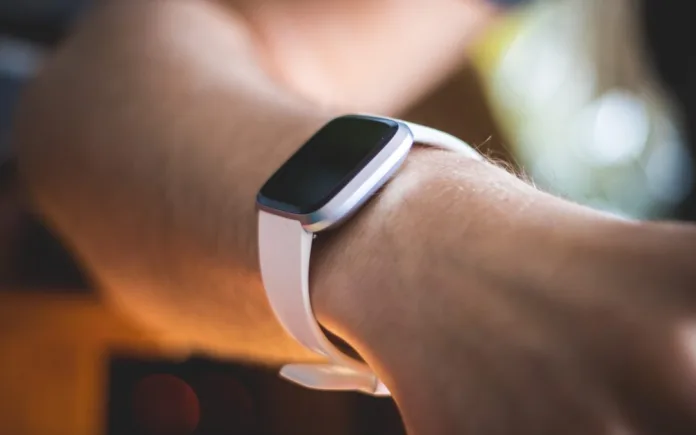In our fast-paced, hyperconnected world, stress has become a persistent companion. From demanding work schedules to information overload and digital burnout, anxiety is no longer an occasional visitor—it’s a daily reality for many. Thankfully, technology now offers powerful tools to counter this mental strain. Wearable sensors for anxiety management have emerged as an innovative solution, helping individuals take control of their stress levels in real time.
This article explores how wearable technology, combined with biofeedback, can empower people to identify stress triggers, adjust behaviors, and maintain emotional balance—all with actionable insights. Whether you’re dealing with chronic anxiety or day-to-day stress, smart wearables may be your new ally in achieving mental wellness.
What Are Wearable Sensors for Anxiety Management?
Wearable sensors for anxiety management are smart devices that monitor physiological markers associated with stress. These sensors often come embedded in fitness trackers, smartwatches, or dedicated wellness bands. They measure indicators such as:
Heart rate variability (HRV)
Skin temperature
Electrodermal activity (EDA)
Respiration rate
Blood oxygen levels
These biometric signals provide real-time data about your emotional and physical state. When paired with biofeedback devices, they offer insights that help you recognize stress patterns and take proactive steps to regain control.
The Science Behind Biofeedback and Stress Regulation
Biofeedback is a method of gaining awareness and control over involuntary bodily functions through real-time monitoring. It helps individuals learn how to relax, regulate breathing, reduce muscle tension, and manage heart rate.
By using wearable tech equipped with biofeedback sensors, users can:
Identify their stress triggers
Receive guided breathing or meditation prompts
Track progress over time
Practice mindfulness more effectively
For example, if a wearable detects elevated heart rate or erratic breathing, it may prompt the user to pause and engage in a calming exercise. This feedback loop helps users develop self-regulation habits and prevent prolonged stress responses.
Top Benefits of Using Stress Tracking Wearables
Immediate Stress Detection
These devices alert users to physiological changes associated with stress before they become overwhelming. Early detection empowers timely intervention.Personalized Insights
Advanced analytics identify patterns in your behavior and environment that may be causing stress. Whether it’s late-night screen time or caffeine intake, wearables highlight your unique triggers.Continuous Monitoring
Unlike traditional therapy sessions, wearable sensors offer 24/7 tracking. This persistent monitoring creates a more complete picture of your well-being.Non-Invasive and Convenient
Most devices are lightweight, stylish, and designed for everyday use. From smartwatches to discreet clips, there’s a solution for every preference.Tech-Enhanced Mindfulness
Many wearables integrate with mindfulness and meditation apps. This synergy promotes long-term mental resilience and helps form positive habits.
How to Choose the Right Wearable Sensor for Your Needs
Not all wearables are created equal. When selecting a device for anxiety monitoring technology, consider the following:
Sensors Included: Look for HRV, EDA, and respiratory tracking for optimal stress monitoring.
Battery Life: Ensure it lasts through the day without constant charging.
App Integration: Choose devices compatible with mindfulness or health apps for broader functionality.
Data Accuracy: Read reviews or consult professionals to ensure reliable metrics.
Comfort and Design: You’re more likely to wear it consistently if it fits well and looks good.
Real-World Applications of Everyday Stress Relief Tech
1. Workplace Wellness
Wearables can detect when your stress levels spike during meetings, tight deadlines, or long work sessions. Some companies now encourage employees to use them as part of mental wellness programs.
2. Academic Pressure
Students juggling exams and deadlines can benefit from biofeedback technology. It helps them manage anxiety, boost concentration, and reduce burnout.
3. Public Speaking and Social Anxiety
If social situations make you nervous, wearables can alert you before anxiety becomes overwhelming—prompting calming techniques like deep breathing.
4. Sleep Management
Stress disrupts sleep. Devices that track your sleep cycles and physiological states can help pinpoint how stress affects your rest, and how to improve it.
Tips to Maximize the Benefits of Wearable Anxiety Tech
Stay Consistent: Wear the device daily to collect accurate and meaningful data.
Engage with the Feedback: Don’t ignore notifications. Use them as opportunities to reset your mind and body.
Log Your Mood: Many apps allow mood tracking. Use this feature to correlate emotional patterns with biometric data.
Set Goals: Use insights to set realistic goals—like practicing mindfulness for 10 minutes daily or improving HRV over time.
Don’t Rely Solely on Technology: Use wearables as a supplement to healthy lifestyle habits, not a replacement.
The Future of Smart Wearable Health Tools
As technology advances, the integration of artificial intelligence (AI) and machine learning into wearables will further enhance their ability to detect and predict stress patterns. Future devices may offer even more precise feedback, suggest personalized coping mechanisms, and integrate seamlessly into your home and work environments.
Additionally, biofeedback devices may evolve beyond wristbands and watches, extending into smart clothing, eyewear, or even earbuds. These innovations promise to make stress management more intuitive, discreet, and effective.
Final Thoughts
Managing anxiety is no longer limited to therapy or medication. With wearable sensors for anxiety management, anyone can track, understand, and respond to stress in real time. These tools offer a powerful, proactive approach to mental wellness—bridging the gap between technology and emotional health.
As you navigate daily life, these small yet mighty devices can serve as a quiet coach on your wrist—helping you stress less, live more, and thrive in the present moment.
